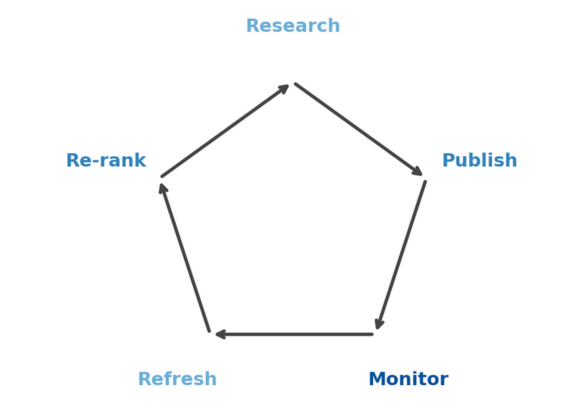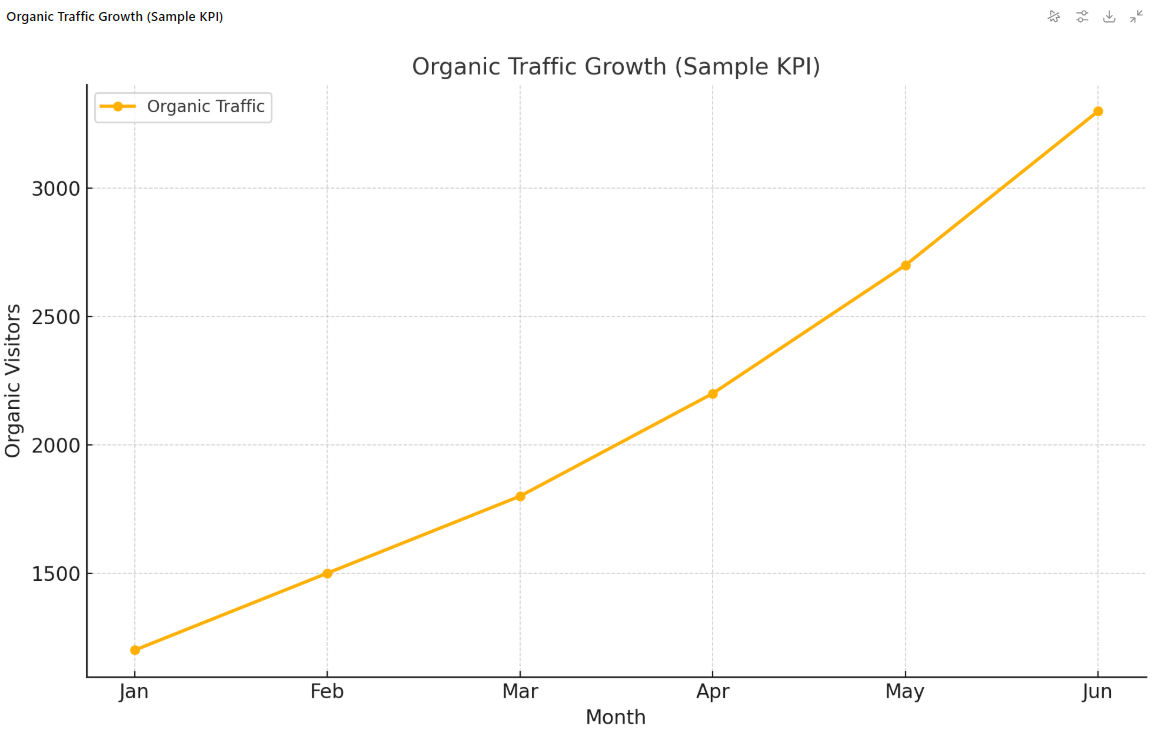Best Commercial Real Estate Content Strategies to Boost Rankings and Leads
In today's ultra-competitive commercial real estate (CRE) market, what you need is attention. Unless you dominate the top of Google for the terms your prospects are typing, you're leaving deals, leads, and revenue on the table. This is where commercial real estate content marketing helps.
At Media Search Group, we specialize in Commercial Real Estate SEO Services and content marketing for Dallas, Miami, Tampa, Houston, Charlotte, Austin, Raleigh, Denver, New York City, and all other cities. We help commercial real estate brokers who are trying to compete and get more clients across and beyond the United States.
Want to Create a Commercial Real Estate Content Marketing Strategy?
What is Commercial Real Estate Content Marketing?
Commercial real estate content marketing involves creating or writing content that is optimized to rank higher in search engines, drive genuine engagement, and gradually nurture leads toward conversion.
Whether you're targeting buyers looking for retail space in Houston, tenants searching for office leases in Raleigh, or investors curious about cap rates in Tampa, the right content positions your brand as the go-to expert in the commercial real estate industry.
Why CRE Firms Can’t Ignore SEO Content
Commercial real estate deals rarely happen overnight. Buyers, tenants, and investors usually spend months researching before they make a decision, which means the firm that shows up early in their search has the advantage.
Did you know?
- 75% of people never scroll past Page 1 of Google (HubSpot).
- 68% of all online experiences begin with a search engine (BrightEdge).
- Content marketing generates 3X more leads at 62% lower cost than traditional marketing (Demand Metric).
9 Proven Content Marketing Ideas for Commercial Real Estate Firms
Some pages just sit there, indexed, forgotten, and invisible. Others? They dominate the top spots on Google, pull in traffic, and turn that traffic into clients.
What's the difference? Structure. Relevance. Authority. SEO.
Let's look at exactly what separates high-performing content from the rest.
1. Market Reports (Q1/Q2 updates)
- Vacancy rates in your city or submarket
- Average lease rates by property type
- Current cap rate ranges that investors are seeing
- A short commentary on what the numbers mean
- Give a sense of scale and layout quickly
- Attract out-of-town investors who cannot tour in person
- Add visual interest to your listings and social channels
According to Deloitte’s 2025 CRE Outlook, over 68% of respondents believe CRE fundamentals like leasing activity, rental growth, and capital availability will improve in 2025. That means content that shows your understanding of these shifts can catch searchers’ attention now.
Quarterly market reports show that you are tracking the market in real time and that you understand where opportunities are opening up.
What to Include in a CRE Market Report
Example: A Q2 report for Miami could highlight that retail vacancy dropped from 5.2% to 4.6% in six months, signaling a healthier leasing market. Sharing this in a branded PDF or blog post positions you as the expert who knows the numbers, not just the listings.
2. Drone Video Tours of Properties
A short video shot from above can show more in one minute than a full photo gallery. Prospects can see how a warehouse connects to major roads or how much parking a shopping center actually has.
Why Drone Videos Work for Real Estate Agents
Example: A broker in Dallas shared a drone tour of a newly renovated office park. The video highlighted the landscaping, nearby highways, and skyline views, which helped secure early inquiries before an open house even happened.

3. LinkedIn Carousel Posts for Brokers
Carousels are a series of swipe-through slides that work like a mini presentation. They are a quick way for brokers to share insights, showcase deals, or educate prospects.
CRE Content ideas for Linked Carousels
- “5 tips for negotiating a retail lease”
- “Top three office submarkets in Charlotte right now”
- A before-and-after of a redevelopment project
Example: A simple 6-slide carousel titled “What to know before signing a warehouse lease” can spark comments and shares among local business owners.
4. Infographics: Cap Rates Across US Cities
Cap rates are one of the most searched data points in commercial real estate. Turning this information into a clean, easy-to-read graphic helps prospects compare markets instantly.
Benefits of Using Infographics for CRE Marketing
- They get shared on LinkedIn and industry forums
- They attract backlinks from blogs and newsletters
- They break down technical data into something visual
Example: Imagine a graphic that shows cap rates for multifamily in Atlanta, Phoenix, and Charlotte side by side. An investor who sees the differences at a glance may be more likely to reach out for deeper insights.
5. Podcast or Interview with Investors
A short podcast or recorded interview with an investor adds a human voice to your brand. Hearing a peer talk about their investment journey often carries more weight than another sales pitch.
Ways to Use CRE Investor Interviews:
- Post the full recording on your website
- Share clips on LinkedIn or YouTube
- Pull quotes for a supporting blog article
Example: A 20-minute interview with a local investor about why they chose industrial property over retail can turn into a podcast episode, a blog post, and several social posts.
6. Hyper-Relevant Location + Property Type Pages
Location pages are not just about ranking in Google. They reassure prospects that you understand their market and their property type.
Examples of Targeted CRE Location and Property Type Pages
- “Office space for lease in Denver”
- “Industrial warehouses in Charlotte”
These pages answer local search intent directly and often bring in high-quality leads from decision-makers who are ready to act.
7. Evergreen Blog Content That Answers Buyer Questions
- What is a triple net lease?
- How do cap rates work?
- Pros and cons of buying vs leasing commercial property
- A 2,000-word guide to zoning laws in Houston
- A full analysis of mixed-use developments in Phoenix
- A yearly forecast of CRE trends in Florida
Some questions never go out of style. Answering them in blog posts gives you content that can rank and generate leads for years.
Strong Evergreen CRE Blog Topic Ideas
A clear and practical article on “How to evaluate cap rates” will still be relevant in three years, even if market numbers change.
8. Authority-Building Longform Articles
When a decision involves millions of dollars, clients want more than surface-level tips. Longform content shows depth and seriousness.
Examples of High-Value Articles for CRE Audience
Longform guides that explain topics such as why multifamily net absorption in May 2025 rose ~19% year-over-year in major markets (NAR) are useful because they tie theory to real performance. These are the kinds of pieces that get cited by other blogs, shared on LinkedIn, and bookmarked by prospects who are still months away from making a move.

9. Portfolio and Case Study Pages
For your case study pages, showing results in metro areas helps. The National Association of Realtors shows that in many metro markets net absorption and vacancy trends differ sharply.
How to CRE Portfolio or CRE Case Studies:
- Start with the client’s challenge
- Explain your process
- Show the outcome in numbers (lease size, value, savings)
- Add keywords naturally in the copy
Content Types vs. Buyer Journey
Different CRE content formats work at different points of the buyer’s journey. Here is a simple chart to make this clear for prospects and remind your team to cover every stage.
The 5-Step Framework to Build a Commercial Real Estate Content Strategy
Here's how to make your commercial real estate content not only visible but also powerful:
Step 1: CRE Keyword Research That Reflects Search Intent
Keyword research for commercial real estate usually tells you more than just “what people search.” It tells you how close someone might be to making a decision. That’s the part most firms miss.
When you look at intent, the picture becomes clearer:
- A prospect typing “buy industrial space in Dallas” is hunting for a deal. That’s a transactional keyword.
- Someone searching “what is a triple net lease” is not ready to sign anything yet, but they are learning and if they learn from you, you’re already ahead. That's an informational keyword.
Step 2: On-Page Commercial Real Estate SEO
A well-optimized commercial real estate page covers a handful of elements that tell both Google and your readers what the page is about.
- Title tags: Should combine the main keyword with a value statement. Example: “Commercial Retail Leasing in Phoenix | Prime Locations Available”
- Meta descriptions: Give the short pitch that shows up under the title in search results. Example: “Find Class A retail space for lease in Phoenix. Talk to a local broker today.”
- Alt text for property photos: Works best when it describes what the picture shows and where the property is located.
- Schema markup: Such as Local Business, FAQ, or Article schema allows your content to qualify for rich results.
- Header structure: H1, H2, H3 should reflect how people search and read.
Step 3: Pillar & Cluster Strategy for Commercial Real Estate Niches
What is a Pillar Page in SEO? A pillar page in SEO is a comprehensive page that covers a broad topic and links to cluster pages on related subtopics.
To create pillar content and clusters, you need to group your content into different hubs:
Property Type Pillars
Allow you to target major asset classes such as industrial, office, retail, and multifamily. Each of these should have a central guide supported by smaller cluster blogs.
For example, a pillar on “Multifamily Investment” could be supported by clusters like “Cap Rates in Atlanta Multifamily” or “Top Neighborhoods for Apartment Development.”
Service Area Pillars
Help you organize content around what you do. Brokerage services, investment sales, and commercial property management each deserve a main page supported by more detailed resources.
Geographic Pillars
Capture local intent. A page like “Office Space Leasing in Houston” addresses searches that are very different from a general “Houston Office Space” page. Localized content shows both Google and prospects that you understand the specifics of their market.
Linking the clusters back to the pillar signals to Google that the firm is an authority, and prospects reading those pages will also feel the same.
Step 4: Internal Linking Across CRE Topics
If someone finds your blog on negotiating office leases in Las Vegas, don’t leave them stuck there. You should point them toward your leasing services page so that they know where to go next.
Here are a couple of ideas on how to place links:
- An article explaining net lease vs gross lease can send readers to your full guide on lease structures.
- A post about SEO for brokers can nod to your broader content strategy page.
These links show Google that your site covers CRE topics thoroughly, and they help readers keep moving instead of bouncing out after one page.
Step 5: Commercial Real Estate Content Refresh and Monitoring Strategy
- Check quarterly data like vacancy rates, cap rates, and absorption.
- Add or remove property listings as they change.
- Update any zoning, tax, or compliance details.
- Fix broken links or old references.
Commercial real estate changes fast. Vacancy rates shift, deals close, and zoning rules get updated. If your website is still quoting last year’s numbers, it feels outdated and Google notices that too.
A simple CRE content refresh plan can help improve rankings and SEO results:
Google Search Console is a useful tool here. If you see a blog slipping from the top spots, it might just need a quick update. Even small edits can bring a page back up.

Paid Ads vs. SEO Content ROI for CRE
Many commercial real estate firms still spend heavily on ads without realizing how CRE-focused content compares over the long run.
| Factor | Paid Ads | SEO Content |
|---|---|---|
| Cost per lead | Higher, fluctuates with competition | Lower, improves as authority builds |
| Lifespan of results | Stops when budget ends | Lasts months or years after publishing |
| Credibility with prospects | Seen as promotional | Seen as educational and trustworthy |
| Best for | Quick visibility, short campaigns | Long-term pipeline and steady deal flow |
Metrics That Commercial Real Estate Content Work (KPIs)
You need to track the metrics that reveal whether your content is ranking, engaging, and most importantly, converting. Here are the key performance indicators (KPIs) that matter most in commercial real estate content marketing:
- Service pages (e.g., "Retail Brokerage in Chicago")
- Blog posts targeting informational keywords (e.g., "What is a triple-net lease?")
- High bounce rate = the visitor left without clicking anything
- Low dwell time = they didn't stick around to read
1. Organic Traffic to Service & Blog Pages
This is your baseline metric. Are your SEO efforts actually bringing people to your site? To get its answer, track traffic to:
If content is optimized correctly, you should see steady month-over-month growth, especially from Google.
Tool tip: Use Google Analytics 4 or Looker Studio dashboards to segment blog vs. service page performance.
2. Bounce Rate & Dwell Time
These two engagement metrics tell you how well your content matches search intent.

If your blog promises "Office Leasing Tips" but reads like a sales pitch? Bounce.
If your location page is light on actual listings or local insights? Bounce.
Fix this by:
- Writing for the reader first, not the sale
- Using clear formatting, H2s, visuals, and internal links
- Embedding CTAs that feel helpful, not pushy
3. Keyword Rankings for Core Commercial Terms
You're not just publishing content but also trying to rank for high-value commercial real estate keywords like:
- "Industrial property for sale Houston"
- "Best commercial real estate broker near me"
- "1031 exchange investment properties"
Use tools like Ahrefs, SEMrush, or Google Search Console to track:
- Top 10 keyword growth
- Click-through rate (CTR) on SERPs
- Newly acquired featured snippets or local pack visibility
4. Inquiries & Form Fills from Content
At the end of the day, content that doesn't drive business is just a blog hobby. For pages and content with commercial/transactional intent, you need to track:
- Lead forms submitted from blog posts
- Calls or live chat initiated after reading the service content
- Newsletter signups or downloads from gated content (e.g., market reports)
Set up conversion goals in GA4 so you know which pages are contributing to your bottom line and which need rework.
Let's Create Your Commercial Real Estate Content Together
Media Search Group isn't just another digital agency. We're a strategic growth partner trusted by commercial real estate firms to create content that ranks, resonates, and converts.
We specialize in:
- Building geo-targeted service pages for brokers and property managers
- Creating long-form blogs that rank for complex CRE keywords
- Developing pillar & cluster strategies tailored to your service areas
- Refreshing outdated content to reclaim top rankings
From industrial leasing in Dallas to investment sales in Miami, our content marketing strategies for commercial real estate deliver the best results.
SEO & Content Marketing Glossary for CRE
- Content Marketing: A strategy that uses valuable, optimized content to attract, educate, and convert prospects into clients.
- On-Page SEO: The process of optimizing elements on a webpage such as title tags, meta descriptions, headers, and images for better rankings.
- Pillar Page: A comprehensive guide that covers a broad topic and links to related cluster pages to build topical authority.
- Cluster Content: Supporting blog posts or articles that dive into subtopics and link back to the main pillar page.
- Search Intent: The reason behind a user’s search query, usually categorized as informational, navigational, or transactional.
- Internal Linking: Adding links between related pages on the same site to improve navigation, SEO, and topical relevance.
- Content Refresh: The practice of updating existing content with new data, keywords, or examples to maintain rankings.
FAQs for Commercial Real Estate Content Marketing
Content marketing for commercial real estate (CRE) is the practice of creating SEO-optimized blogs, guides, market reports, and service pages that attract buyers, tenants, and investors online. It helps CRE firms build authority, improve search visibility, and generate qualified leads through valuable and educational content.
Commercial real estate content should be updated quarterly to reflect the latest market data, vacancy rates, and cap rates. Regular updates improve SEO rankings and ensure your CRE website looks current and trustworthy to both Google and prospects.
The best content for CRE SEO includes pillar pages, location-based service pages, evergreen blog posts, leasing guides, investment FAQs, and market updates. These formats target both informational and transactional keywords that buyers, tenants, and investors search for.
Media Search Group specializes in commercial real estate SEO and content marketing. Unlike generic agencies, we create keyword-driven strategies such as pillar and cluster content, local SEO service pages, and quarterly refresh cycles tailored to CRE markets.
The ROI of CRE content marketing is higher in the long term compared to paid ads. Paid ads stop generating leads once the budget ends, while SEO content continues to attract traffic and qualified inquiries for months or years at a lower cost per lead.
CRE brokers should publish 2 to 4 SEO-optimized blogs per month, 1 to 2 LinkedIn posts per week, and quarterly market reports. Consistency builds authority, improves keyword rankings, and helps brokers generate leads over time.
For multifamily, the best content includes market reports, investment guides, and cap rate analysis, since investors focus on long-term financial returns. For retail, local property spotlights, drone video tours, and neighborhood demographic reports work best because tenants want to understand traffic patterns and competition.
Most commercial real estate firms see results from SEO content marketing within 3 to 6 months. Location pages may rank within weeks, while competitive CRE keywords may take several months to secure steady organic traffic and lead flow.
Ready to grow your commercial real estate business organically?
Connect with Media Search Group to build a commercial real estate content strategy that delivers.








